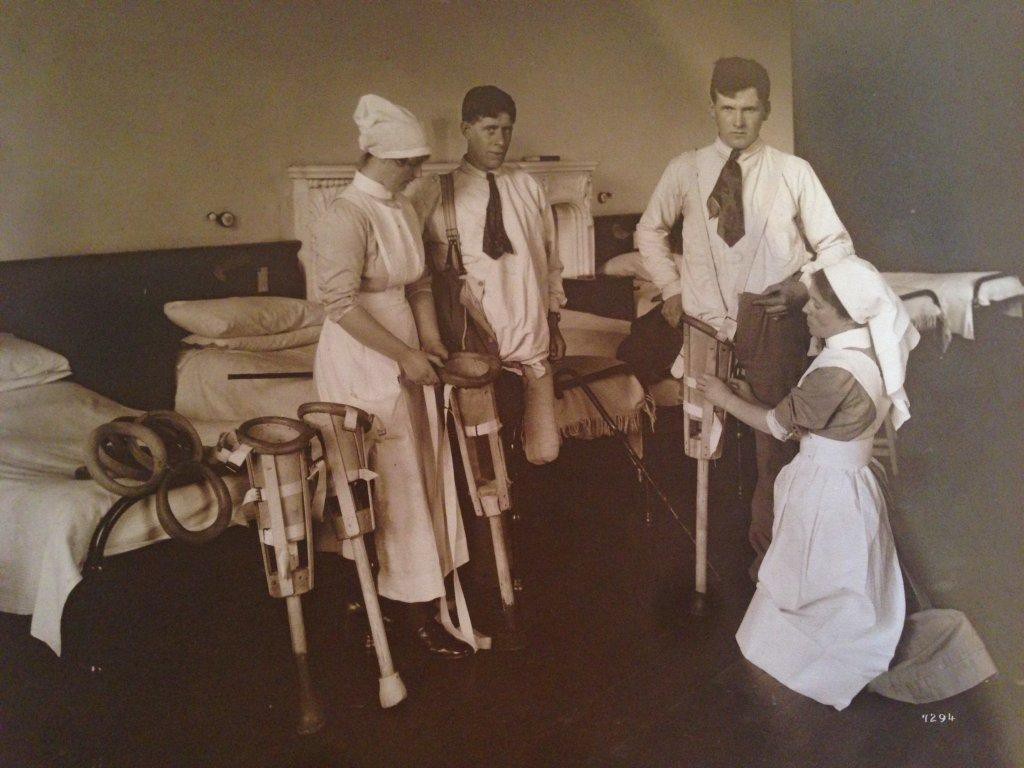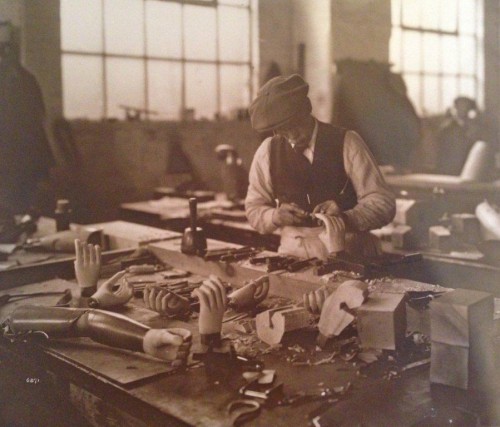AN AMAZING collection of long lost images show victims of the First World War being fitted with prosthetic limbs and hands.
The remarkable chance discovery was made by staff researching the history of Erskine Hospital in Renfrewshire, which celebrates its centenary next year.
Almost 10,000 wounded soldiers passed through its doors after losing limbs whilst fighting in the war.
And now, photographs unearthed in a locked room and underneath floorboards provide an extraordinary insight into their rehabilitation process.
The black and white images show craftsmen working on artificial hands, soldiers trying on prosthetic legs and a table piled high with wooden limbs.

One even shows a proud soldier stood by his bed wearing half a pair of trousers as a doctor fits a wooden leg to his stump.
A wide range of medical appliances were also uncovered – including a prosthetic limb designed and pioneered by Sir William McEwan, co-founder of the hospital.
He found it deplorable that at the time Britain depended wholly on foreign imports of prosthetics, and so enlisted the help of the best local craftsmen to work on the design and construction of the limbs.
The archive will now be collated and preserved by Erskine, which cares for veterans of the armed forces, and Glasgow University’s Archive Services, led by the historian and television presenter Dr Tony Pollard.
Dr Pollard said he hopes to rediscovered collection will help shed new light on medical developments and pioneering therapeutic work carried out during the war.
The historian, who is a senior lecturer in History and Battlefield Archaeology at the university, said: “What we are unearthing at Erskine is quite remarkable.

“There are boxes upon boxes of wartime history that will shine a light on so many personal stories of bravery and endurance during the First World War, but also the incredible advancement in the treatment of injured personnel not just physically but mentally since 1916.”
Before the establishment of the Princess Louise Scottish Hospital for Sailors and Soldiers, which became Erskine, wounded Scots were sent to England to have artificial limbs fitted.
“Sir William took up the challenge to establish the facility but what he did that was revolutionary was turn it into a therapeutic centre as well,” Dr Pollard said.
“What we are seeing here is technology married to medical advances.”
Erskine, which has gone on to become the biggest ex-services facility in the country, is working on a patient database of every soldier admitted and discharged at the hospital during its history.
Steve Conway, chief executive of The Erskine, said preparations for the centenary of the charity had made him realise its archive had been largely neglected.
He said: “The partnership with the university and funding from The Wellcome Trust will enable us to restore, archive and digitise the material, which will then be accessible to everyone.”

